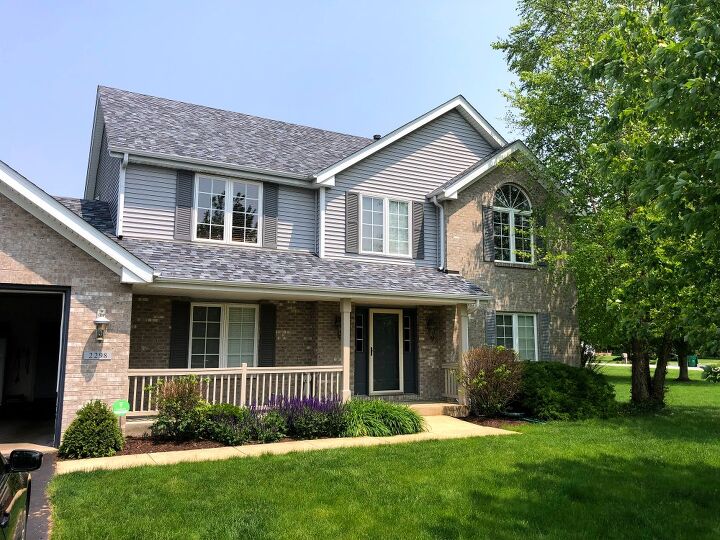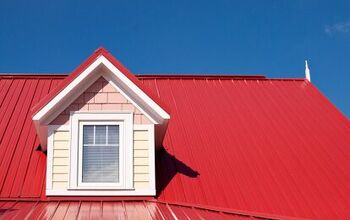Flat Roof Vs. Pitched Roof: What Are The Major Differences?

Roof systems come in all shapes and sizes but can generally be classified into two categories: flat and pitched. Both types of roof systems can be ideal for a wide range of buildings.
That said, it is important to understand the differences between the two as one may be better suited in certain situations. This will depend on your budget, personal aesthetic, and the style of the building itself, too.
Whether you own a home or a commercial building, you’re going to have to choose between a flat roof system or a sloped roof system. Sloped roofs will cost more upfront but last longer. They offer a more traditional aesthetic for your property. Flat roofs are more modern and contemporary. They also improve energy efficiency and provide more usable square footage, too.
There’s plenty more to say on both types of roof systems, and we’re going to talk about it all. In this article. That way, you can make an informed final decision on what roof system to choose for your property.
Do You Need Roofing, Siding, or Gutter Installers?
Get free, zero-commitment quotes from pro contractors near you.

About Flat Roofs
Despite their name, flat roofs are not completely flat. They have a very slight slope to ensure proper drainage through gutter systems. The vast majority of commercial buildings feature a flat roof system. Many moderns homes sport this type of roof, too. There are many different styles of sloped roofs, including…
- Gable
- Salt Box
- Gambrel
- Mansard
- Pyramid
Here are the top advantages and drawbacks to installing a flat roof.
Pros
Enhanced Energy Efficiency
Flat roof systems leave less overhead space between your ceiling and roof, which means there isn’t as much space for air to get trapped and stagnate. Not only will this keep your home’s interior more comfortable, but it will also lower your energy bills over time.
Lower Construction Costs
Installing a flat roof system is much more cost-effective upfront. They take up less space and therefore use fewer materials than their sloped counterparts. This makes the initial installation much cheaper and will make repairs more affordable, too.
Easy Access for Maintenance
When it comes time to make repairs to a flat roof system, you’ll find it’s much easier to do when compared to repairing sloped roof systems. This is mostly because they are much safer and easier to walk on, so contractors can better access any damaged areas of the roof.
More Cohesive Interior Space
Instead of having a pitched attic space, your property will have upstairs rooms that are the same size as those downstairs, giving you more usable space for the entire building. This is one of the reasons they are ideal for commercial spaces.
Versatile Exterior Uses
Since flat roof systems are essentially flat, they can serve as an additional space that can be transformed into a garden, a deck, or other types of lounge space. This can improve your overall space and increase your home’s value, too.
Cons
Requires More Maintenance
While repairing flat roofs is more affordable and easier to do, it will be a more frequent occurrence. They pose more structural issues, especially when it comes to dealing with heavy rains and snow. For this reason, you should have your roof inspected at least once a year or more.
Shorter Lifespan
Flat roofs will deteriorate much quicker than sloped roofs, which means on top of having to repair it more often, you’ll be dealing with more frequent replacements, too. Typically, the lifespan of a flat roof will end after about a decade. Some stronger materials like
Not as Reliable in Cold Weather
Since flat roofs are, well, flat, they are not as reliable during the wintertime when snow and ice are consistent factors. Consistent snowfall can make proper drainage difficult and will increase the chance of leaks, too.
About Pitched Roofs
Pitched roofs have varying levels of steep slopes with a peak at the top. They offer a more traditional aesthetic that gives your home a triangular shape with tall attic spaces. These are the more common roof options amongst homeowners and can be installed on commercial properties, too. Let’s dive into the advantages and disadvantages of sloped roofs.
Pros
Less Maintenance
Sloped roofs won’t run into as many issues as flat roofs, which means you won’t have to spend as much time making fixes and keeping it in good condition throughout the year. Even though sloped roofs are more expensive to install, you’ll see that they end up paying for themselves by staying in good shape for longer periods of time.
Longer Lifespan
Along with not needing repairs as often, sloped roofs have a longer lifespan in general, making them a great investment. Depending on what your roof is made from, a sloped roof can last anywhere from 10 to 100 years.
Sustainable
Pitched roofs are suited for mechanical systems like solar and photovoltaic installations, making them more eco-friendly. Plus, the design of sloped roofs will make it easier to collect rainwater from the gutters, which can be repurposed.
Stable Through Every Season
When it comes to keeping your property safe through heavy rains and snows, pitched roofs come out on top. Their design helps easily direct water away from your house and ensures water can’t rest on the roof for long periods of time. The pitch also makes it so snow is distributed evenly across the entire roof system.
Cons
More Expensive Upfront
Since sloped roofs require more materials and are more difficult to install, they will be more expensive at the start. The construction period will also take longer, so you’ll have to allow time for that process in your schedule.
More Burden on Foundation Around Building
Sloped roofs need deeper footings and place more burden on the foundations of a building, so you will have to make sure your entire property is able to handle that. For this reason, it is often unwise to replace a flat roof with a pitched one.
Related Questions
What are the best materials for a flat roof?
There are a handful of quality materials that professional roofers will use for flat roofs that are beneficial in terms of price, maintenance, appearance, and overall lifespan. The top four materials many builders prefer include PVC roofing, metal roofing, TPO (thermoplastic polyolefin) roofing, and modified bitumen roofing.
What are the best materials for a sloped roof?
Pitched roofs are made from many different parts. That said, roofers use a wide range of different materials for pitched roofs. However, there are four options that stand out amongst the rest due to their durability, weather resistance, style, and more. These include metal roofs, asphalt shingles, clay tiles, and concrete tiles.
What is the difference between a flat roof and a low-slope roof?
There is no difference between the terms “flat” and “low-slope.” Contractors will use these terms interchangeably. This is because flat roofs cannot be entirely flat. They need to have a slight slope to ensure proper drainage when rain or snow falls.
Do You Need Roofing, Siding, or Gutter Installers?
Get free, zero-commitment quotes from pro contractors near you.

So, Should You Install a Flat or Sloped Roof System?
At the end of the day, the choice to install a pitched roof or a flat roof is entirely up to your personal preference, budget, and the style of the building. Both types of roof systems come with their own unique benefits and drawbacks, and it’s ultimately up to you to decide which ones you can live with or without. Hopefully, this article has made that decision a little bit easier.

I am a copywriter and editor based in the Las Vegas area with nearly a decade of experience under my belt writing landing pages, cost guides, blog posts, newsletters, case studies, and social media content. I have a degree in Strategic Communication and experience working in both the account and creative spheres. My goal is to always be discovering new interests and bettering myself as a writer and editor along the way.
More by Kerry Souder














![10 Best Electric Lawn Mowers - [2022 Reviews & Top Rated Models]](https://cdn-fastly.upgradedhome.com/media/2023/07/31/9070486/10-best-electric-lawn-mowers-2022-reviews-top-rated-models.jpg?size=350x220)












